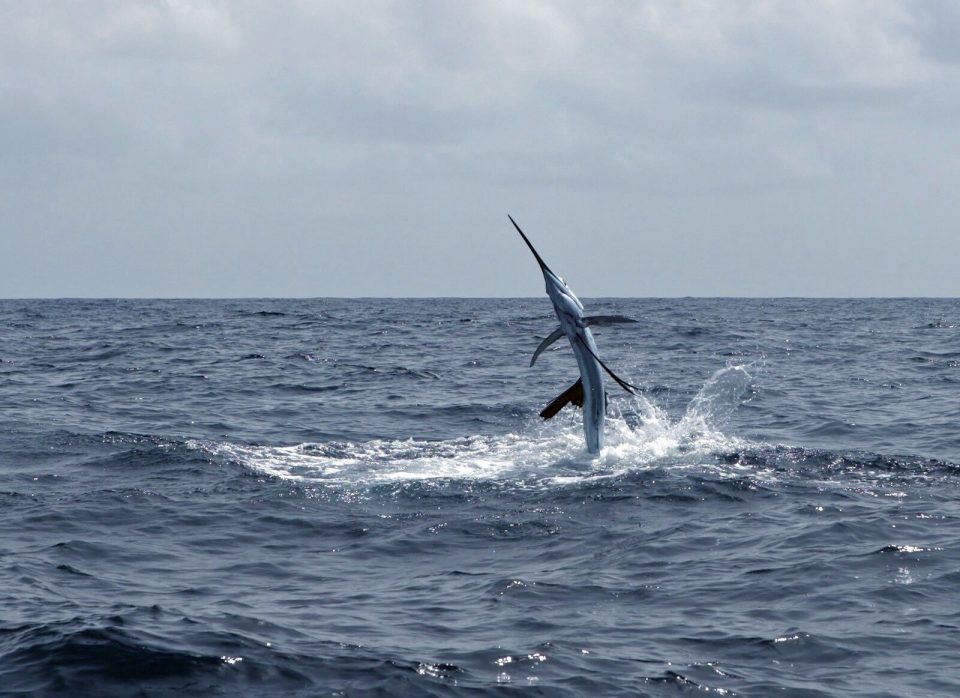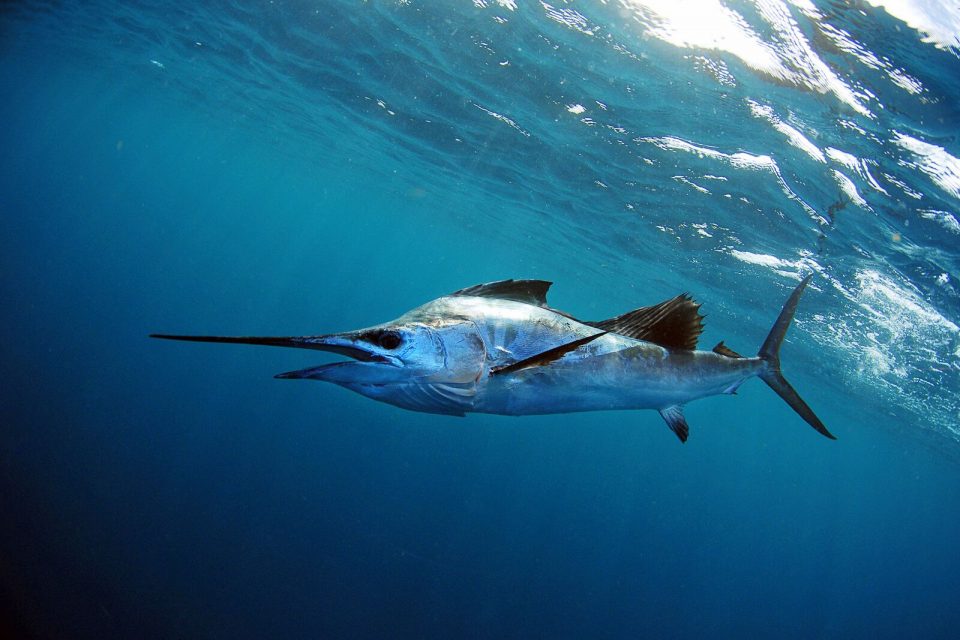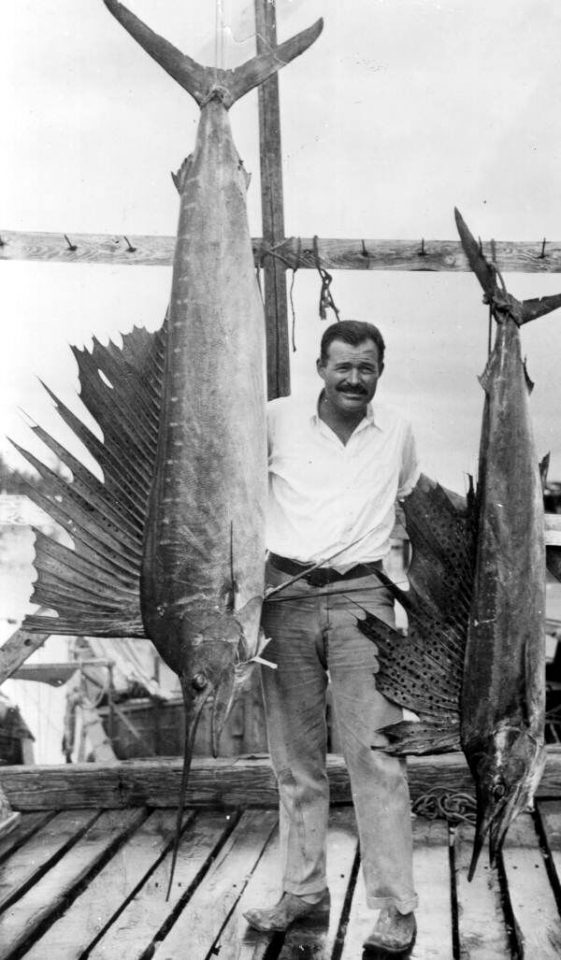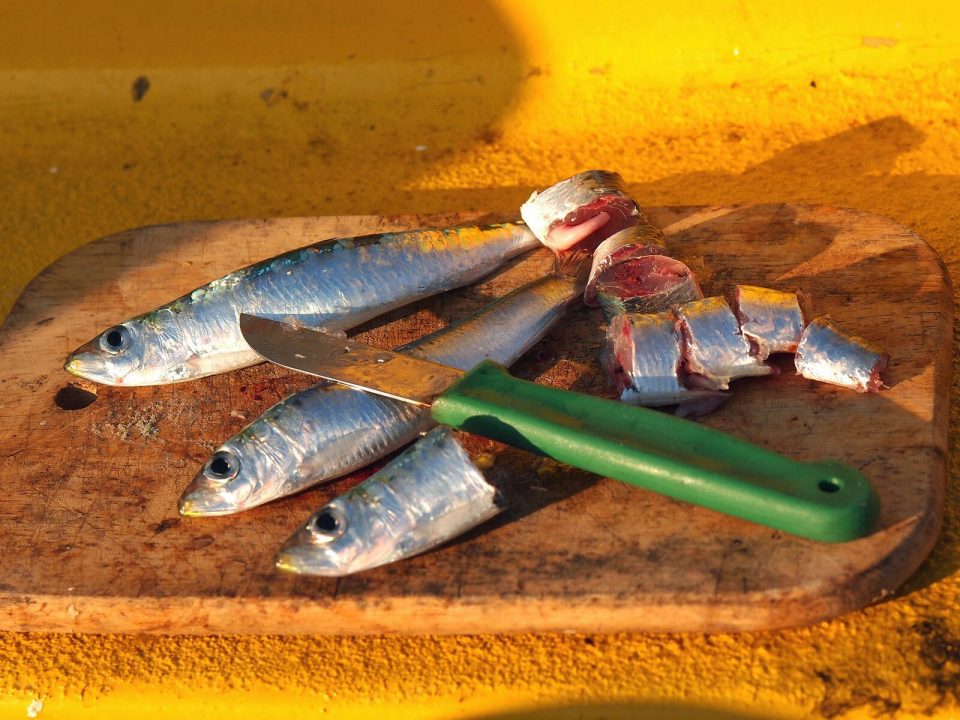Florida Waterways
“Sailfish”
By Kevin McCarthy
CAPTIONS:
1. Two lucky anglers with an Atlantic sailfish
2. A sailfish leaping high
3. A sailfish under the surface
4. Ernest Hemingway in Key West in the 1940s with an Atlantic sailfish he had caught
5. Cutting up bait for sailfish
6. The sailfish mascot for Palm Beach Atlantic University
States often have symbols that mean a lot in the history or legacy of that particular place. So Florida has a state reptile (American alligator), bird (mockingbird), butterfly (Zebra Longwing), animal (Florida Panther), Marine Mammal (Manatee), saltwater mammal (Porpoise or Dolphin), even a state soil (Myakka Fine Sand). The choice of the Sailfish for our state saltwater fish makes perfect sense, since the fish is found along our Atlantic coast and in the Caribbean.
Author Ernest Hemingway was once photographed with a sailfish he had caught in the Florida Keys, and no doubt did much to make deep-sea fishing off our coasts a favorite with anglers from the 1940s on.
The fish, which is related to the marlin, can dive as deep as 650 feet, and can swim as fast as a remarkable 22 miles per hour, making it one of the fastest fish in the sea. They feed on anchovies, mackerel, and sardines, as well as some crustaceans, and have been known to feed in groups of several sailfish to drive smaller fish up to the surface for easier pickings. It can reach a length of ten feet and a weight of 128 pounds.
To see a sailfish, with its metallic-blue color, sail-like dorsal fin, and pointed snout, as it flings itself into the air in an effort to throw a hook is unforgettable. I learned that the fish normally keeps its sail folded down while swimming and raises it only when about to attack its prey. Why? Supposedly because the raised sail reduces sideways oscillations of the head and thus reduces the motion that the prey might notice. The sailfish can actually put its bill into a school of prey without being noticed. Also, a raised dorsal fin can create a fence-like barrier to block their prey from escaping. And they can use their pointed bill to pierce a smaller fish.
Fishermen probably like to hook a sailfish for the fight that will ensue with the creature, but they don’t keep the fish. Fishermen who want to catch the fish will usually troll for it, using whole mullet or ballyhoo as bait. The National Marine Fisheries Service manages the catching of the sailfish in order to ensure the long-term sustainability of its numbers. U.S. commercial vessels are not allowed to sell, retain, or buy Atlantic billfish, including sailfish. And recreational fishermen must obtain a permit from NOAA fisheries for fishing in federal waters.
At least one school in Florida, Palm Beach Atlantic University, chose the sailfish as its mascot. The picture here is care of “Ron Hilliard/PBA Athletics.” One web site thought the choice of a sailfish as a mascot was really weak and opined that “Noah Should Have Left the sailfish Off the Ark,” but that’s going pretty far. Anyway, if you want to try your hand at landing a sailfish, better hire a guide who knows the currents of the Atlantic and the habits of this great fish.
Kevin McCarthy, the author of The Black WACs of World War II (2019 – available at amazon.com), can be reached at ceyhankevin@gmail.com.






